READY TO GET STARTED?
REQUEST A FREE ESTIMATE
Fill out the form below or call (888) 466-7849 for a free, no-obligation estimate.
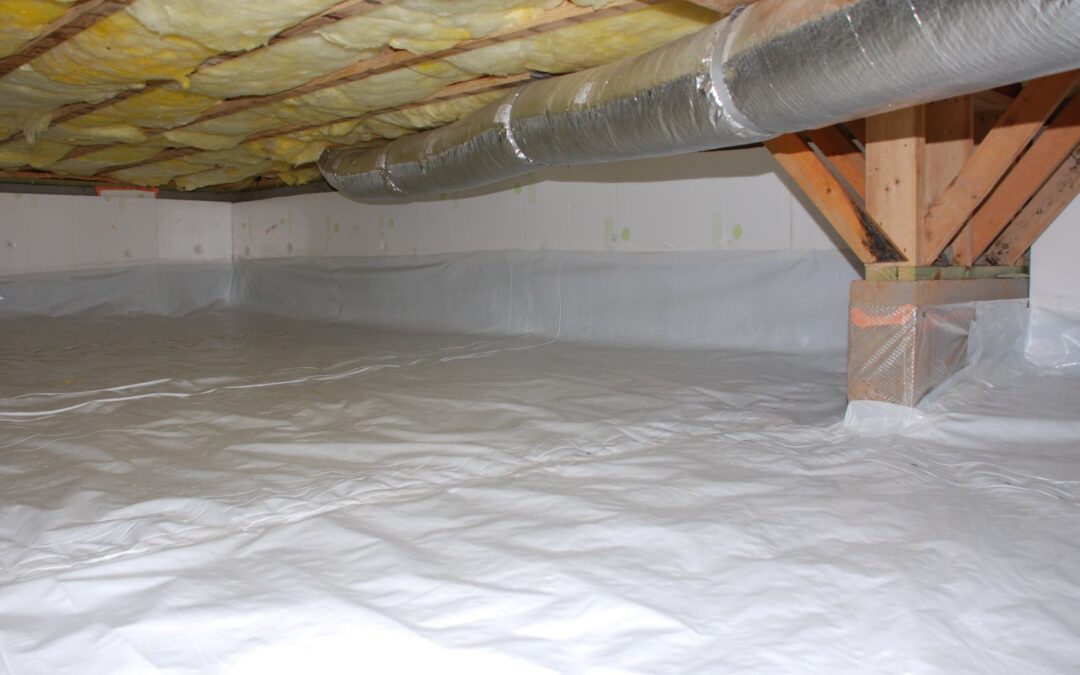
Your Tennessee home’s crawlspace plays a significant role in the health and safety of your family and overall property. If crawlspaces are not properly taken care of, it can lead to pest infestations, foundation damage, poor indoor air quality, and potential health hazards! Luckily, crawlspace encapsulation looks to address these concerns. We break down all you should know about crawlspace encapsulation and how to maintain a healthy crawlspace!
Encapsulation is the process of sealing your crawlspace with a barrier to prevent moisture from entering. A crawlspace professional will install this moisture or vapor barrier on the floor and walls of the crawlspace, allowing moisture to stay out to prevent fungi growth and other moisture-related problems.
Along with preventing fungi growth and excessive moisture, there are several benefits to enclosing your crawlspace! Moisture can affect several factors inside your home, Including:
Enclosing your crawlspace is a great way to avoid moisture, but the care for your crawlspace doesn’t stop there! It’s important to continue taking care of the space even after it’s enclosed. Regularly check for signs of moisture such as dampness or standing water. If you notice moisture buildup, address it as soon as possible. Additionally, consider installing screens over vents or openings in your crawlspace to prevent pests from entering. Remove any debris or clutter you might see, as pests use it to hide. Lastly, schedule regular inspections with your Nashville pest control company to ensure the area is free of pests and other problems.
If you think it’s time to enclose your crawlspace or would like more information on various crawlspace care solutions, call a pest control company near you for a free inspection!
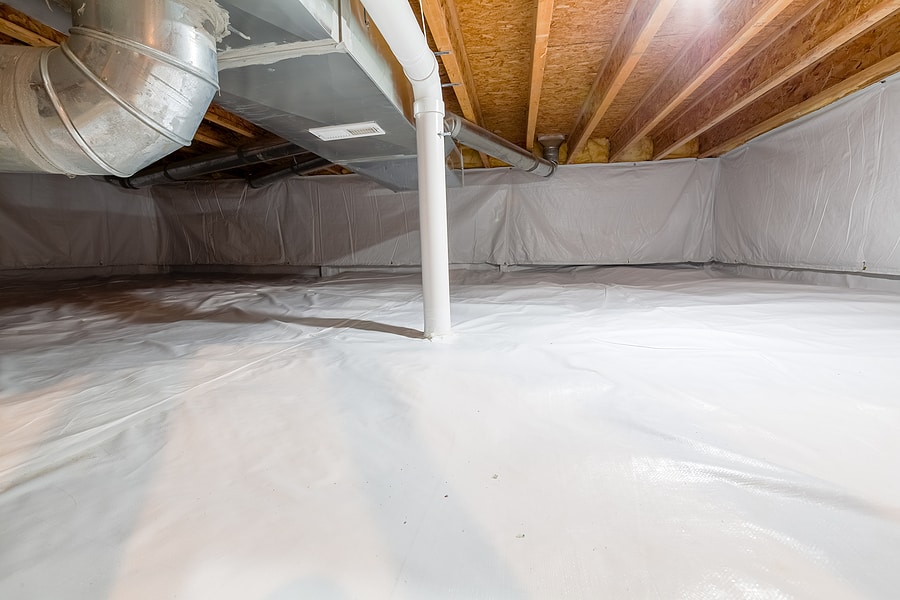
During the spring and summer months, we all expect Macon’s weather to get extremely hot and humid. These temperatures can have a major effect on our home, creating unwanted moisture in our crawlspaces which can lead to excess water, mold, mildew, pests, and rust. A moisture barrier can be essential to avoiding these elements, as it’s utilized to block vapors and moisture in the soil from entering your crawlspace. Check out the benefits moisture barriers can have on your home below!
Moisture can have a major impact on the temperatures inside your home. Your HVAC unit or furnace may be running longer to help maintain the temperature inside, using more electricity and, in turn, increasing your electricity bill. When a moisture barrier is installed, it acts as a sealant, controlling moisture levels and easing the strain on your HVAC system. This helps your home become more energy efficient and save money on your energy bills.
The ideal environment for mold and mildew growth is an area with high moisture levels. If your crawlspace contains these levels, mold and mildew may be in your air system, which can be detrimental to you and your family’s health. Once a moisture barrier is installed, it reduces the moisture levels, preventing mold and mildew from forming.
Your crawlspace can affect the temperature of your home, making it too hot, cold, stuffy, or even too dry, depending on the weather. The moisture will absorb the warmth from your house or keep escaping, causing your HVAC or furnace to run too long. Once you install a moisture barrier, it will seal those spaces and keep moisture out of your crawlspace to help regulate the temperature inside your home.
Having an unsealed crawlspace is like an invitation to household pests and wildlife creatures! These pests will enter your crawlspace in search of food, water, and shelter, causing severe damage to your home and health in the process. If inside, rodents and other wildlife will chew through wood and electrical wires. While roaches and other insects utilize your crawlspace to gain access to your living areas, a moisture barrier will almost act as a shield, closing off your crawlspace and eliminating entry points for pests to get inside.
The last thing you want to deal with is hot temperatures inside your home during the Macon summers. If you are interested in moisture barriers or crawlspace enclosures, contact your local pest control company for an evaluation.

A moisture barrier is a plastic liner that covers the dirt in your crawlspace. These barriers are used to block vapors and moisture in the soil from entering your crawlspace. But is it necessary to install a moisture barrier under your home? While that decision remains a personal one for you as a homeowner, there are several benefits to moisture barriers.
Moisture in your crawlspace can affect the temperature inside your home. As your HVAC unit or furnace runs longer to help maintain the temperature inside, it uses more electricity which, in turn, increases your electricity bill. This also puts additional strain on the HVAC unit, causing them to wear out faster and need costly repairs and/or replacement. A moisture barrier acts as a sealant, controlling the moisture levels and easing the strain of your HVAC system, making your home more energy efficient and saving you money on your energy bills.
High moisture levels in your crawlspace provide the ideal environment for mold and mildew growth. Mold and mildew in your air system can be detrimental to your and your family’s health. Mold can also cause significant damage to your home. Installing a moisture barrier greatly reduces these moisture levels, preventing mold and mildew from forming. Mold and mildew are often the cause of foul odors in your home, as well. A moisture barrier can also help eliminate these stale, musty odors from your home.
Moisture that gets into your crawlspace affects the temperature in your home. It can make your home too hot, too cold, too stuffy, or too dry depending on the weather, the season, and other factors. The moisture either absorbs the warmth from your house or keeps it from escaping. In turn, this causes your HVAC unit or furnace to run too long trying to maintain a steady temperature indoors. Installing a moisture barrier seals those spaces and keeps the moisture out of your crawlspace, helping to regulate the temperature inside.
Your home’s foundation is vital to its structure and soundness. Moisture in your crawlspace can lead to wood rot, especially on joists and beams. Rotting wood can lead to significant structural damage to your home which can, in turn, stick you with a huge repair bill. Moisture barrier installation reduces the amount of moisture in your crawlspace which helps prevent wood rot, protecting the structural integrity of your home.
Your unsealed crawlspace is an open invitation to pests and wildlife in search of shelter, food, and water. Once inside, these critters can cause significant damage to your home and your health. Rodents and other wildlife can chew through wood and electrical wires. Roaches and other insects can use the crawlspace to gain access to your home, posing potential health risks to you and your family. Installing a moisture barrier completely closes off your crawlspace, eliminating this entry point for pests into your home.
How do you know if you have a problem within your crawlspace? Some signs of crawlspace trouble include:
If you are interested in moisture barriers or crawlspace enclosure, contact a reputable company for more information.
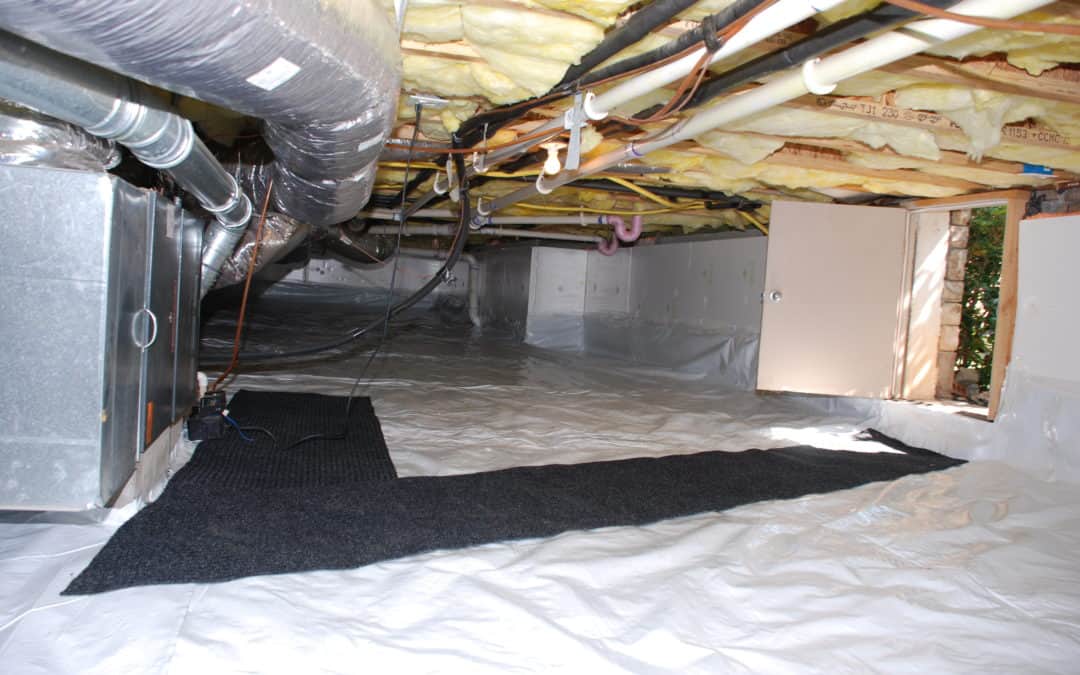
During the winter, the last thing you want to deal with is a cold home. With temperatures dropping as we approach the winter season, it’s important that your heating systems are ready and your home is prepared to weather the cold. If not, you could be dealing with cold air and high energy bills. Crawlspace enclosure this winter provides a solution to both problems that many homeowners face.
There are several benefits to enclosing your crawlspace. One that many look forward to is saving on their energy bill. The moisture in your crawlspace can affect the temperature inside the home, causing the HVAC unit or furnace to run longer to help keep your home warm, in return using more electricity. When you enclose your crawlspace, the moisture barrier acts as a sealant, which controls the moisture levels. This will ease the strain of your HVAC system to make your home more energy-efficient and save on energy bills.
Another great benefit of enclosing your crawlspace is preventing mold and odor. If left open, high moisture levels can cause mold and mildew growth, creating considerable damage to your home, posing a health risk to your family, and potentially causing an odor throughout your home. When your crawlspace is enclosed, the moisture barrier helps to reduce moisture, preventing mold and mildew from forming.
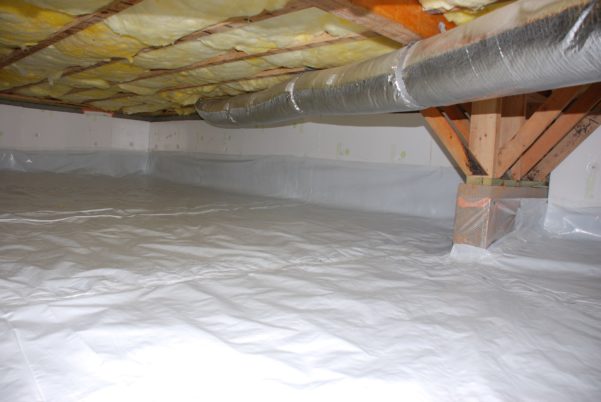
An unsealed crawlspace is an open invitation to pests and wildlife looking for shelter, food, and water. Once inside, these pests and nuisance wildlife can cause damage and present a health risk to your home and family. Once installed, the moisture barrier can help eliminate entry points for these pests to infest.
Consider calling your local pest control company for a crawlspace enclosure inspection and quote to stay warm and pest-free this winter!
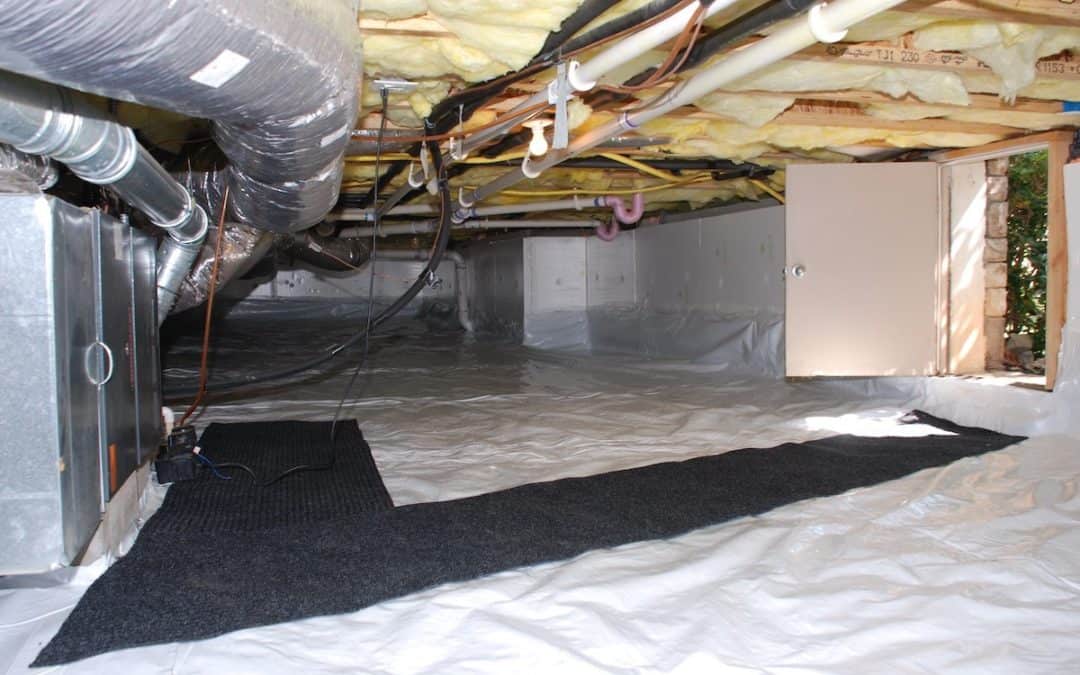
Dealing with cold winter weather outside is bad enough; when the cold temperatures start creeping into your home it’s even worse. Heating systems work hard enough in the winter time to keep our homes warm and comfortable. Additional cold air seeping into your house leaves us with cold feet and higher energy bills.
Up to 50% of household air flows in from your crawlspace. An unenclosed crawlspace lets your heated or cooled air out and lets outdoor air in. This causes your heating and cooling systems to work overtime to compensate for this fluctuation in temperatures, causing you to still feel cold floors and inconsistent temps throughout the house. These units burn more energy leading to increased utility bills. This also puts more strain on the system leading to repairs and replacements sooner and more often.
Crawlspace enclosure is similar to adding a liner to your pool to avoid leaks. Water vapor enters your crawlspace from the ground and can even seep through cement. Increased moisture can cause a host of problems in your crawlspace and your home. Moisture attracts pests; degrades indoor air quality; provides the ideal condition for mold and mildew growth which leads to rot, warped floors, and structural damage. Adding a moisture barrier and dehumidifier is a great way to help keep the moisture out of your crawlspace.
Some common reasons people enclose their crawlspace include:
There are two main disadvantages to crawlspace enclosure. The first is the initial cost of installation. While there is a somewhat pricey initial fee for installation, the savings in energy bills and pest control costs over the long term offset these costs. The second disadvantage is improper installation. Whether doing it yourself or using a professional, improper installation or faulty materials do occur. The most common signs of improper installation include:
Once you have your crawlspace enclosed, it is important to continually inspect it to make sure tears or other damage have occurred. It is recommended that the crawlspace be inspected at least once per year but preferably twice per year. Many homeowners time their crawlspace enclosure inspection to coincide with their annual termite inspection. It is important to check the crawlspace for moisture levels (there should be no humidity, condensation, or standing water); signs of mold or rot (including loose joists, damage to support beams and air ducts, or visible mold present); and signs of rodents or pest activity (including droppings and chew marks).
While crawlspace enclosure can be a DIY project, it is recommended that installation be done by a professional. This not only helps ensure quality materials and appropriate techniques are used but also guarantees repairs and replacement in the event there are issues. Contact your local pest control company for a crawlspace enclosure quote.
Is That A Rat or A Mouse and Why It Matters